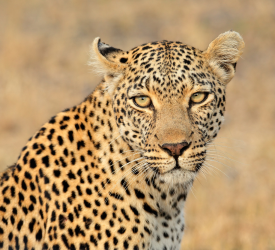

Pilibhit Tiger Reserve is rich in flora, dominated by dense sal forests (Shorea robusta), along with mixed deciduous trees like teak (Tectona grandis) and mahua (Madhuca longifolia). The forest understory includes shrubs such as bamboo and lantana, providing crucial wildlife cover. Expansive grasslands support herbivores, while wetlands nurture diverse aquatic plants, essential for the ecosystem’s balance. The reserve also contains many medicinal plants, used by local communities in traditional practices, highlighting the area's ecological and cultural significance.
Pilibhit Tiger Reserve is famed for its rich wildlife, notably its population of Bengal tigers. Alongside tigers, it hosts other mammals such as leopards, elephants, and deer species like sambar and chital. The reserve is also a birdwatcher's paradise, with over 300 species of birds, both migratory and resident. Reptiles, including various snakes and lizards, also thrive, adding to the rich biodiversity. This diverse ecosystem supports a wide range of species, making it a key site for conservation and wildlife enthusiasts alike.

The best time to visit Pilibhit Tiger Reserve is from November to February. During these months, the cooler, pleasant weather makes it ideal for wildlife spotting. This period coincides with the dry season, increasing the chances of sighting animals near water sources and providing a more comfortable outdoor experience.
Pilibhit Tiger Reserve boasts rich biodiversity, housing over 127 animal species, 326 bird species, and 2,100 flowering plants. Its diverse ecosystem includes high sal forests, plantations, and grasslands, providing habitats for the endangered tiger, swamp deer, Bengal florican, hog deer, and leopards, among others.
Yes, there are various accommodations near Pilibhit Tiger Reserve, including rest houses, lodges, and huts at locations like Mala, Chuka, and Bankatti. While most essential facilities are available, some places may lack a canteen. For more luxurious options, visitors can find star hotels in Pilibhit or Bareilly, which offer air-conditioned rooms and car hire services for sightseeing.
Essentials for a safari at Pilibhit include comfortable clothing in neutral colours, binoculars, a camera, sunscreen, insect repellent, and any necessary medications. It’s important to be prepared for varying weather conditions during your visit.
Yes, Pilibhit Tiger Reserve has rules to ensure visitor and wildlife safety while preserving the environment. Visitors must obtain permits, stay within designated areas, and adhere to operating hours. Littering, feeding animals, making loud noises, smoking, or lighting fires is prohibited. Follow speed limits during safaris, remain in vehicles unless permitted, and avoid off-roading. Photography should be done without flash, and professional filming requires prior permission.
Yes, visiting Pilibhit Tiger Reserve with children can be an enriching experience. Ensure their safety by keeping them close and supervised, especially during safaris, where they must remain inside the vehicle at all times.
Yes, local guides are available at Pilibhit Tiger Reserve. These knowledgeable guides can enhance your safari experience by sharing insights about the area's wildlife, flora, and fauna.
Nearby attractions include Pilibhit town, which offers cultural insights, Nainital (150 km away) famous for its lakes, Jim Corbett National Park (160 km away) for wildlife spotting, and Bareilly (56 km away) known for temples and markets. Khatima (80 km away) features religious sites, and Katarniaghat Wildlife Sanctuary (90 km away) focuses on conservation efforts. Proximity to the Nepal border also allows exploration of border towns and cultural experiences.
Firearms, cigarettes, and plastic bags are prohibited within the park to ensure the safety of wildlife and the environment.
Experience the thrill of a Jhalana Leopard Safari and witness the elusive leopards in their natural habitat!
Experience the thrill of a Jhalana Leopard Safari and witness the elusive leopards in their natural habitat!

Book Cabs
Starts From ₹3000
View Details →

Book Flights
Starts From ₹8200
View Details →

Book Hotels
Starts From ₹3500
View Details →

Book Safaris
Starts From ₹1250
View Details →

Welcome to World of Wilders, a travel management company that offers an unparalleled travel experience in India. We specialise in Jaipur Safaris, Indian Safaris, Rajasthan Tours, India Tours, Flight and Hotel Bookings and Cab Booking in Jaipur.
Designed & Developed with ♥ in India by TakeOff Ventures